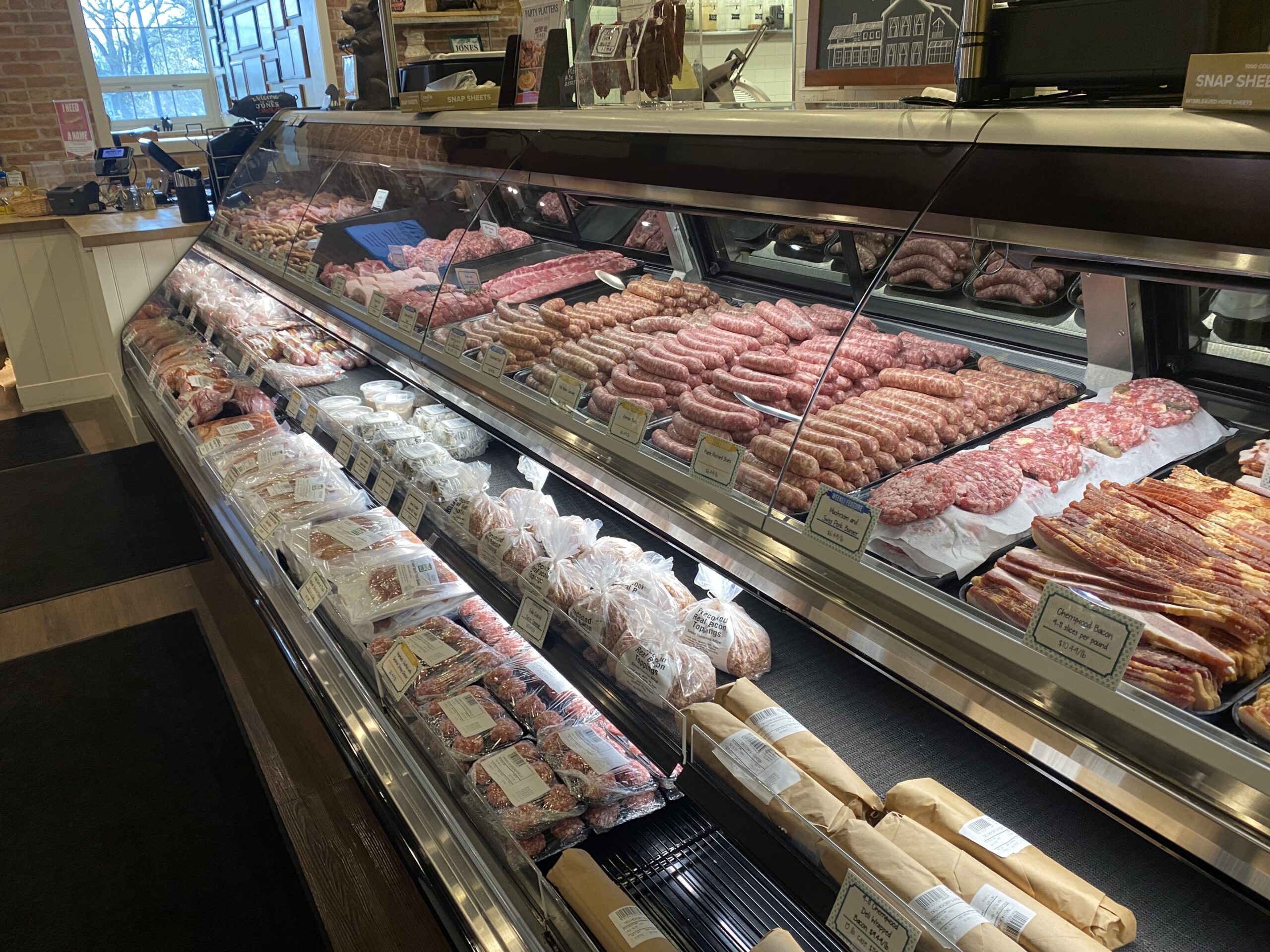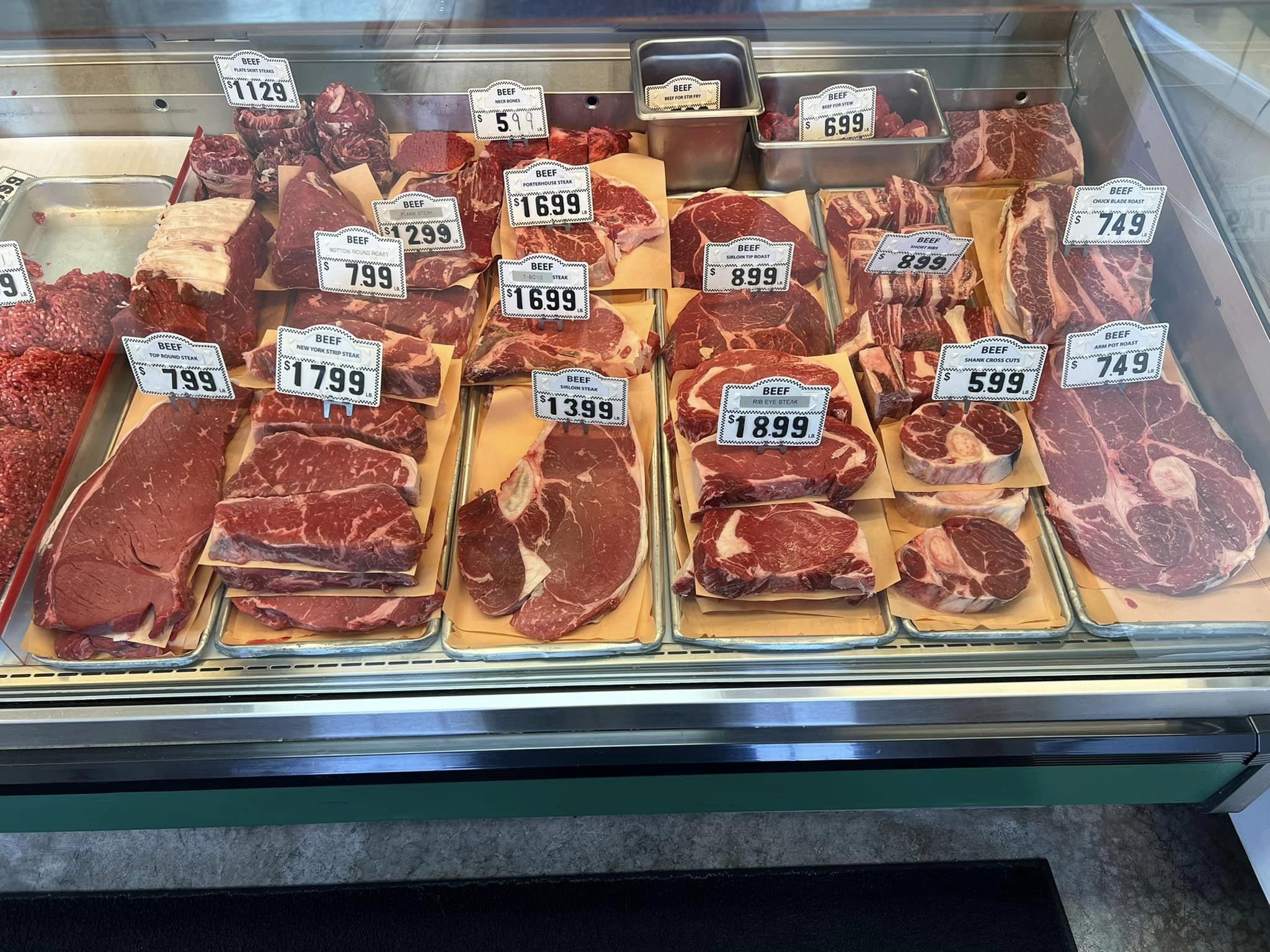Why Residents Love Bagley Farms Meat Market Edwardsville IL for Their Meat Buying
Why Residents Love Bagley Farms Meat Market Edwardsville IL for Their Meat Buying
Blog Article
Uncover the Art of the Butcher's Cut in a Modern Meat Market
In the ever-evolving landscape of contemporary meat markets, the butcher's cut has actually transcended its conventional roots, combining old-time workmanship with modern practices. bagley farms meat market edwardsville il. Today's butchers are not merely cpus of meat; they are well-informed craftsmens who highlight sustainability and ethical sourcing. Their knowledge in selecting and preparing cuts customized to certain culinary requirements supplies an unmatched eating experience. Yet, what genuinely sets the modern-day butcher apart is their capability to forge a deeper link in between consumers and the beginnings of their meat. How do these masters equilibrium custom with innovation, and what ramifications does this have for the future of meat intake?
Evolution of Butchery Methods

The mid-20th century saw butchery techniques further refined by scientific insights right into muscle biology and meat aging, improving both tenderness and preference. Advancements like vacuum packaging and refrigeration expanded item shelf-life, enabling butchers to diversify offerings and boost high quality control. This duration additionally marked the rise of customized devices, such as band saws and meat slicers, which enhanced precision and effectiveness in meat processing.
The 21st century has actually presented electronic innovation right into the butchery world. Electronic systems now help in tracking animal provenance and optimizing cuts to fulfill specific consumer choices. In addition, a renewal in artisanal butchery has arised, blending standard abilities with modern expertise to deal with customers seeking moral and sustainable meat choices. This evolution emphasizes a vibrant interplay between practice and advancement, conference contemporary needs while preserving the craft's heritage.

Understanding Meat Cuts

Understanding the details of meat cuts is important for both butchers and consumers looking for top quality and value. Each cut comes from a various part of the animal, imparting unique flavors, structures, and cooking methods. Proficiency of these differences not only boosts cooking experiences but additionally maximizes the utility of each carcass. For butchers, specific cuts show skill and regard for the craft, guaranteeing very little waste and optimum return.
The key classifications of meat cuts consist of primal, sub-primal, and retail cuts. Primitive cuts, such as the loin, rib, and chuck, are the big areas at first divided from the carcass. Butchers then damage these down even more right into sub-primal cuts, before lastly producing retail cuts offered to consumers, like ribeye or tenderloin. Each stage calls for cautious focus to anatomical framework and muscle structure.
Recognizing muscle structure is crucial; muscle mass made use of more often by the pet often tend to be tougher and are best fit for sluggish food preparation methods, while less-used muscles, like those discovered in the loin, are extra tender and ideal for barbecuing or roasting. Experience with these differences empowers consumers to make educated options, boosting their cooking endeavors.
Picking Top Quality Meat
Selecting the best meat involves even more than just picking an aesthetically attractive piece from the display screen. The art of selecting quality meat calls for a discerning eye and expertise of certain characteristics that signify quality and excellence.
Second of all, think about the marbling, which refers to the white streaks of fat within the muscle mass. Appropriate marbling is an essential indication of tenderness and taste, as it melts throughout cooking, enhancing the meat's juiciness. Keep in mind, higher marbling usually correlates with exceptional top quality cuts, such as USDA Prime.
Structure is an check these guys out additional crucial factor; meat must feel solid to the touch, not slimed or overly soft. In addition, bear in mind the aroma. Fresh meat should have a clean, neutral scent, devoid of any kind of sour or off-putting odors.
Coupling Cuts With Cooking Techniques
Efficiently matching cuts of meat with the ideal cooking approaches is important for accomplishing optimum flavor and structure. Various cuts vary in tenderness, marbling, and connective cells content, each needing details methods to open their potential. For circumstances, tender cuts like filet mignon and ribeye, with their inherent marbling, gain from high-heat, quick-cooking approaches such as grilling or pan-searing. These approaches enhance the meat's all-natural tastes and guarantee a juicy coating.
On the other hand, tougher cuts like brisket and chuck roast are rich in collagen, which breaks down into gelatin when cooked slowly. These cuts are optimal for braising or sluggish roasting, enabling the meat to tenderize over time and develop deep, intricate tastes. Cuts such as short ribs and pork shoulder fare well with slow-cooking approaches, where expanded cooking times change their robust textures right into delicious meals.
Lamb shanks and oxtail, which require long term food preparation to tenderize, are ideal candidates for cooking or sluggish simmering. These methods coax out abundant, passionate tastes while maintaining moisture. By recognizing the special attributes of each cut, chefs and home chefs alike can raise their culinary productions, making certain each meal is both satisfying and remarkable.
The Butcher's Function Today
Browsing the developing landscape of the modern meat market, the butcher's role today prolongs beyond simple prep work of cuts. Contemporary butchers are culinary craftsmens, educators, and supporters for lasting methods.
In enhancement to crafting precise cuts, butchers currently involve directly with clients, supplying cooking guidance and customizing his comment is here options to suit private demands and choices. Their experience in meat aging, marbling, and flavor profiles equips customers to make enlightened choices, boosting their cooking experiences. This tailored solution exhibits the butcher's evolving role as a trusted expert in the cooking area.
Furthermore, butchers are essential in decreasing waste, utilizing whole animals to produce varied items such as sausages and supplies - bagley farms meat market edwardsville il. This thorough strategy not only respects the animal but additionally lines up with modern sustainability objectives. In this means, the modern butcher embodies both tradition and development, adapting you can try here to an ever-changing market while preserving the artistry and integrity of their craft

Verdict
The contemporary butcher's craft intricately weaves typical methods with modern technologies, highlighting sustainable techniques and ethical sourcing. Proficiency in comprehending diverse meat cuts and high quality indicators encourages butchers to offer informed referrals, lining up details cuts with ideal food preparation techniques. This knowledge not just raises cooking experiences but additionally strengthens the link between customers and the beginnings of their food. By honoring historic practices while accepting modern demands, the butcher's duty remains crucial in today's sophisticated meat market.
Report this page